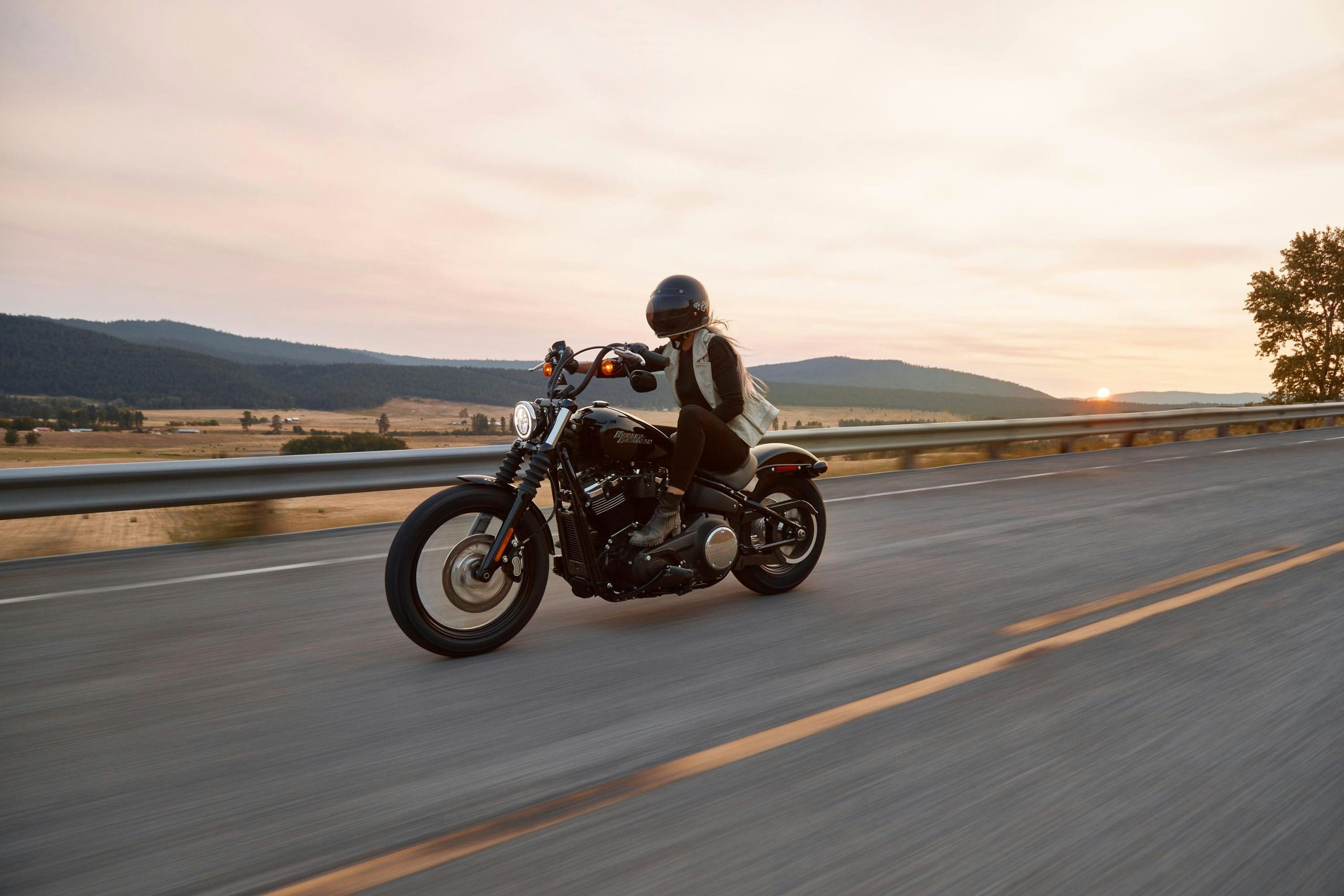If we want to travel quickly and easily, two-wheelers are commonly one of the most used options people prefer. While cars have the safety, mopeds or motorcycles have the swiftness to break through heavy traffic and reach their destination.
Out of the two wheels, mopeds, scooters, and motorcycles are popularly used. In fact, in Hawaii, I’ve seen that most people prefer mopeds even more than motorcycles as they are easy to travel around the Hawaiian islands.
But now, the question arises: Which moped or motorcycle is safe and which is more dangerous? If you, too, have this question, then we have stated the facts along with the stats and provided a comprehensive comparison of the safety risks associated with mopeds and motorcycles so you can make a better decision!
Brief Overview Of Mopeds And Motorcycles
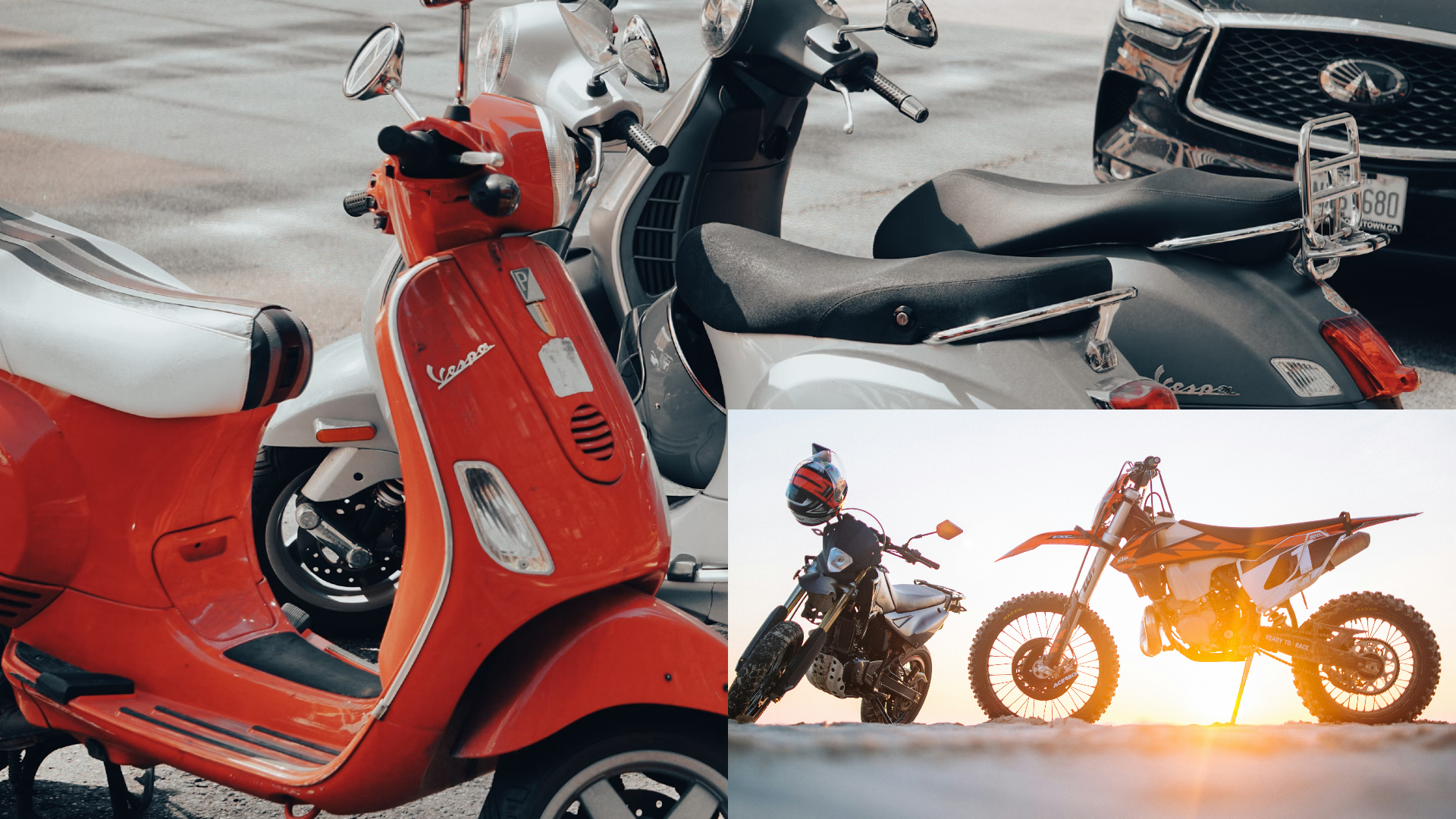
Before we get into their differences and see how riding motorcycles or motor scooters is safe or dangerous, let’s have an overview of what these vehicles actually are.
Mopeds or motorbikes are two-wheeled vehicles that are more efficient and flexible means of transportation.
Mopeds are light motorbikes with engines usually less than 50cc. They are intended for short distances and are economical and easy to use. Their maximum speed is about 30 mph, making them suitable for urban commute jobs. Because of their smaller wheels and size and less power, mopeds can be ridden by many people, even if they are not very experienced.
Motorcycles, on the other hand, come in different shapes and sizes, from small 125cc ones to big machines over 1000ccs or more. Speed, power, and performance characterize them as they ride fast and can move in different terrains. Generally, motorcycles can be classified into cruise bikes, sports bikes, touring bikes, etc., which all provide unique experiences during rides.
Mopeds, as well as motorcycles, offer cheap transport and freedom on the roads. Nevertheless, due to its speed and power level, riding motorbikes require a higher skill level compared to riding mopeds. To avoid injuries, both moped and motorcycle riders should wear safety helmets and protective clothes.
Difference Between A Moped And A Motorcycle
Mopeds and motorcycles are popular modes of transportation, but they come with unique safety risks. Understanding the differences between mopeds and motorcycles is crucial for riders to make informed decisions. Here, we’ve stated the major contrast between a moped and a motorcycle in aspects of design, power, speed, and how they are used:
Engine Size And Power
Moped: Its engine size is around 50 cc or smaller at times. These types of vehicles have limited energy capabilities since their speeds are lower than those associated with motorcycles.
Motorcycle: An assorted range of engine sizes ranging from 125cc to over 1000cc exists for motorcycles while relaxing on it in its topmost position. Motorcycles with strong engines have higher power levels and speed.
Speed
Mopeds: They usually have a top speed of around 30 mph, making them ideal for city commuting and short trips.
Motorcycle: These can reach much higher speeds, often exceeding 100 mph, depending on the model.
Design And Structure
Moped: Often features a step-through frame, pedals, and simpler construction. They are lightweight and easy to handle.
Motorcycle: Built with a more robust frame, designed for strength and stability. There are different styles of motorcycles, including cruisers, sport bikes, and touring bikes, among others. These cater to varied riding preferences.
Licensing Requirements And Regulations
Moped: Generally, mopeds require less stringent licensing and training requirements. In some regions, they can be ridden with a regular driver’s license.
Motorcycle: Requires a specific motorcycle license, which includes more comprehensive training and testing as a result of their speed limits.
Safety Risks for Two-Wheeler Riders
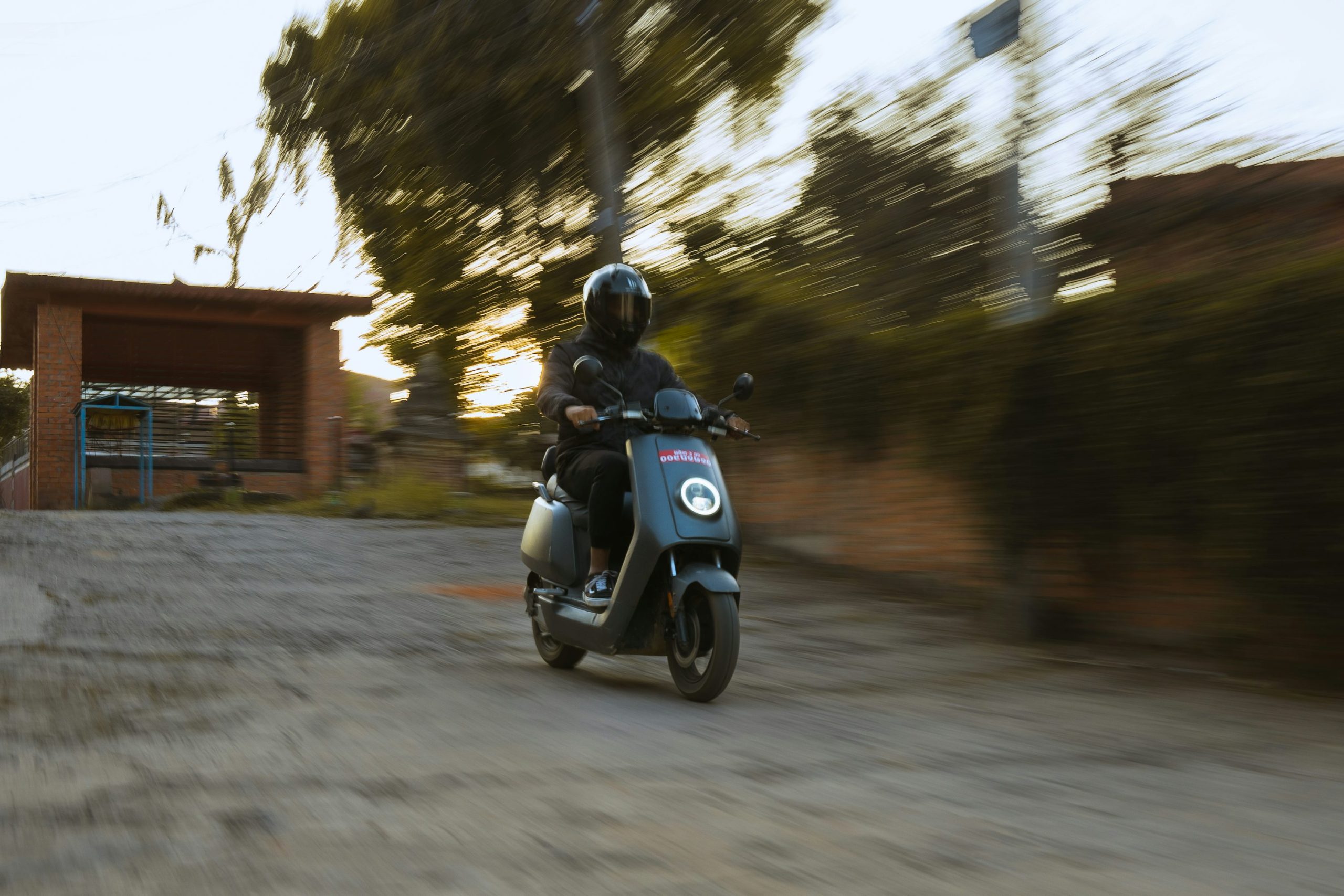
People who ride two-wheelers, whether bikes or motorcycles, encounter a number of risks. These may lead to severe injuries or even death. Several safety risks are too serious for bikers.
No Protection: Compared to cars, motorcycles and moped riders are exposed when they meet accidents; thus making them more vulnerable.
Visibility: Two-wheelers are generally smaller and do not easily catch the eye of other drivers, especially when it is dim or there is bad weather.
Road Hazards: Many scooter riders face bigger road hazards, such as potholes, loose materials on the road, or faded stripes.
Weather Conditions: High amounts of precipitation rain combined with a lot of moisture reduce visibility range to less than 20 meters, hence making it difficult for a motorcycle or moped rider to drive safely or retrain their motorcycle from slipping off.
Inexperience: It is an ongoing process, and inexperienced riders, especially those who have just finished their training courses, are prone to such situations because they may not yet know how best to manage them. They are unable to respond effectively during emergencies.
Impaired Riding: Riding while intoxicated inhibits rational thinking abilities by essential parameters such as motor coordination reactions, hence increasing accident probabilities.
Other Drivers: Aggressive and careless drivers who do not notice motorbikes on their way or those moped in the driver’s blind spot become a serious threat to two-wheelers since they might lack response capabilities
Mechanical Malfunctions: Incidents like brake failures or tire ruptures can cause a driver to lose control of their vehicle and crash on the road.
Not Enough Safety Gear: The absence of relevant safety equipment such as helmets, gloves, jackets, and boots raises the chances of serious injury should an accident occur.
Safety Comparision Between The Two
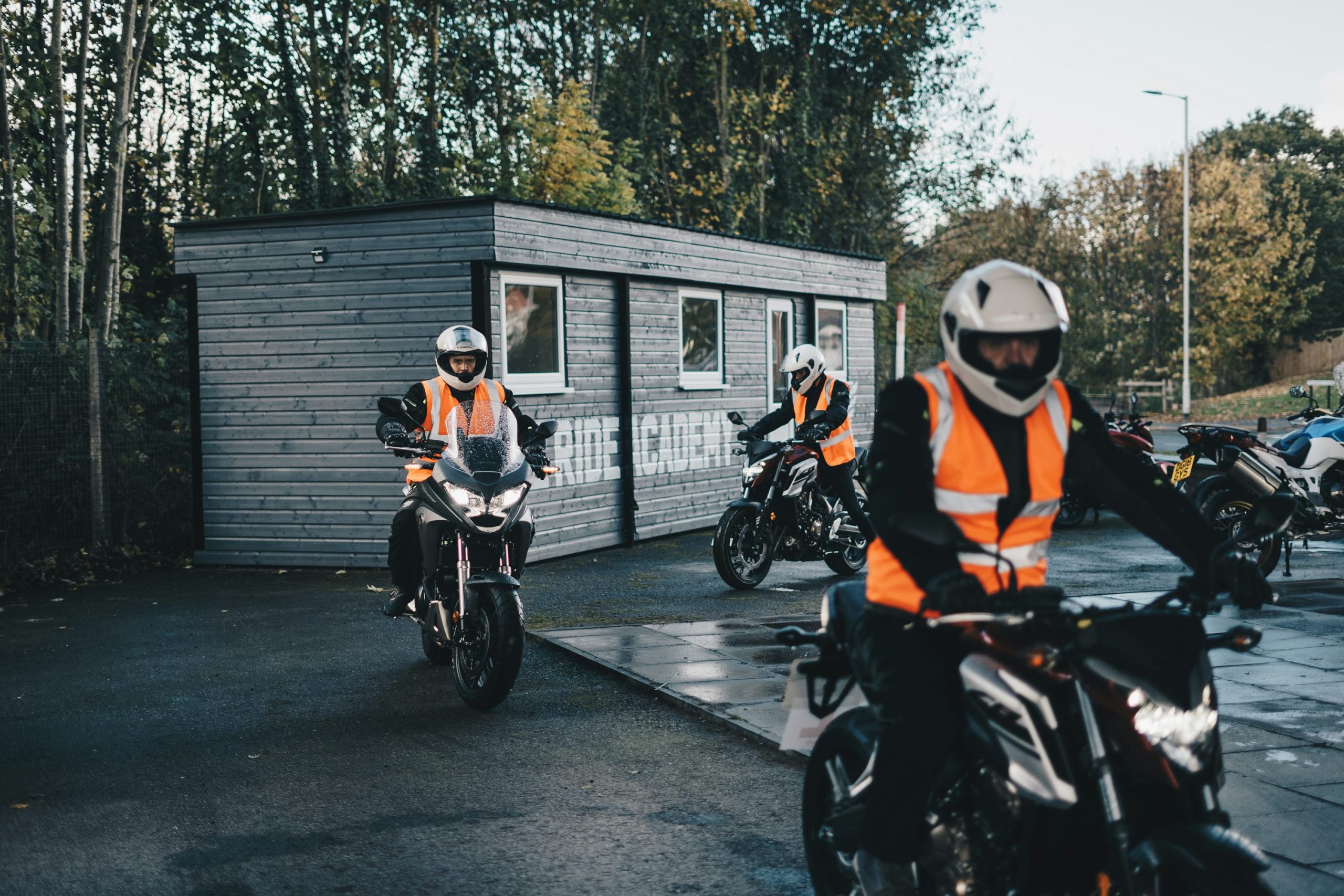
Comparing the safety of mopeds and motorcycles can help riders choose the best option for their needs.
Generally, when it comes to urban commuting, mopeds have a reduced maximum velocity and are, therefore, easy to handle. As such, they are considered to be safer than motorcycles because they are usually lighter in weight, making them less likely to cause severe injuries in case of minor accidents than motorbikes that have a higher speed.
Otherwise, motorcycles are primarily designed for high speed and long distances, making them more prone to serious accidents, especially on highways.
Nevertheless, motorcycles frequently possess better safety features, like anti-lock braking systems (ABS) and sturdier construction, that can reduce the chances of being involved in an accident.
While mopeds might provide a more secure ride during short, low-speed trips, motorcycles, with their improved security attributes, are suitable for experienced riders on fast-moving roadways and intricate routes where they can experience tragedies quickly.
Crash Dynamics Explained—Moped Vs Motorcycles
Crash dynamics are super important in figuring out how bad injuries can get in motorcycle accidents. Studies show that motorcycle crashes are usually worse than scooter crashes because motorcycles go faster and are heavier.
Crash dynamics are pretty different when you compare mopeds and motorcycles. The main reasons? Their design and speed. Speed really cranks up the crash severity—faster means more serious, generally.
Take motorcycles, for instance. They’re built for speed but aren’t super stable. They zoom around way faster than mopeds, so if they crash, there’s a lot more energy involved. That means a higher chance of bad injuries. Plus, the design differences—like the size and protective gear—between bikes and motorcycles also affect how risky and severe crashes can be.
Moped And Motorcycle Accident Stats
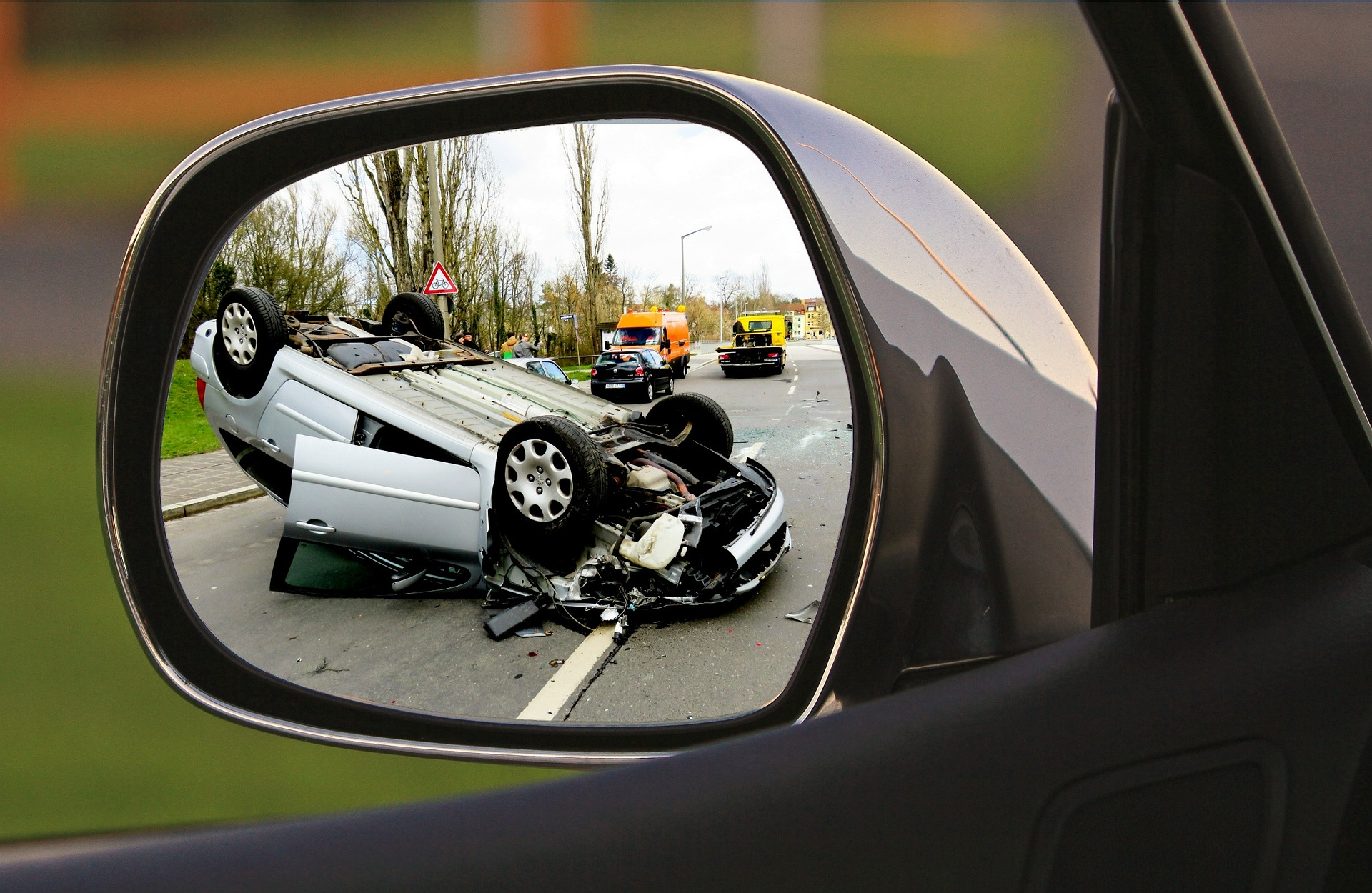
Here’s a rundown of some eye-opening stats about moped and motorcycle accidents:
Crash Rates and Severity: Mopeds might crash more often, but motorcycle crashes are usually more severe. Especially when speed, night, or weekends are involved.
Injuries Rising: The NHTSA reported that combined moped and motorcycle injuries jumped from 88,000 to 103,000 in just one year (2007).
Brain Injuries: The Centers for Disease Control and Prevention says mopeds are linked to over 20% of injury severity, especially traumatic brain injuries.
Higher Risk: Riders of motorbikes, mopeds, or scooters are 35 times more likely to suffer fatal injuries compared to those in regular cars, according to the NHTSA.
Accidents in 2014: The NHTSA recorded 92,000 injuries and 4,295 deaths from motorcycle, moped, and scooter accidents across the US.
Traffic Fatalities: According to the NHTSA, motorcycle riders account for about 14% of all traffic fatalities in the US.
Hawaii’s Stats: The Hawaii State Department of Transportation noted 13 deaths among motorcycle, motorscooter, or moped riders in 2023, up from 8 the previous year. They emphasize road safety, especially during Motorcycle Safety Month.
2022 Fatalities: In 2022, 33 motorcycle-related deaths made up 28% of all traffic fatalities. Among these, 22 riders didn’t have proper licenses, 18 tested positive for alcohol or drugs, and nine deaths were from single-vehicle crashes with speed as a factor. Only nine riders were wearing helmets.
Factors Contributing To Accidents
Accidents occur due to a combination of various factors, which can be broadly categorized into human, environmental, and mechanical factors. Read below about how these factors contribute to road accidents:
- Human factors are the most significant contributors, accounting for a majority of accidents. These include distracted driving, such as using mobile phones, eating, or conversing with passengers.
- Speeding, drunk driving, and fatigue are also critical human-related causes, as they impair reaction time and judgment.
- Poor weather conditions, such as rain, snow, fog, or ice, reduce visibility and traction, making it harder to control vehicles.
- Inadequate road infrastructure, including potholes, sharp curves, and insufficient lighting, can lead to accidents. Moreover, poorly designed intersections and lack of proper signage contribute to road mishaps.
- Mechanical factors involve failures or malfunctions in vehicles, such as brake failure, tire blowouts, or engine issues. Regular maintenance and timely repairs are essential to prevent these problems.
- Additionally, manufacturing defects in vehicles can also lead to accidents.
- Lastly, a combination of these factors can often lead to accidents. For instance, a driver might be speeding on a wet road with worn-out tires, significantly increasing the risk of a crash.
Understanding and addressing these contributing factors is vital for improving road safety and reducing the incidence of accidents.
Safety Gear And Measures To Take
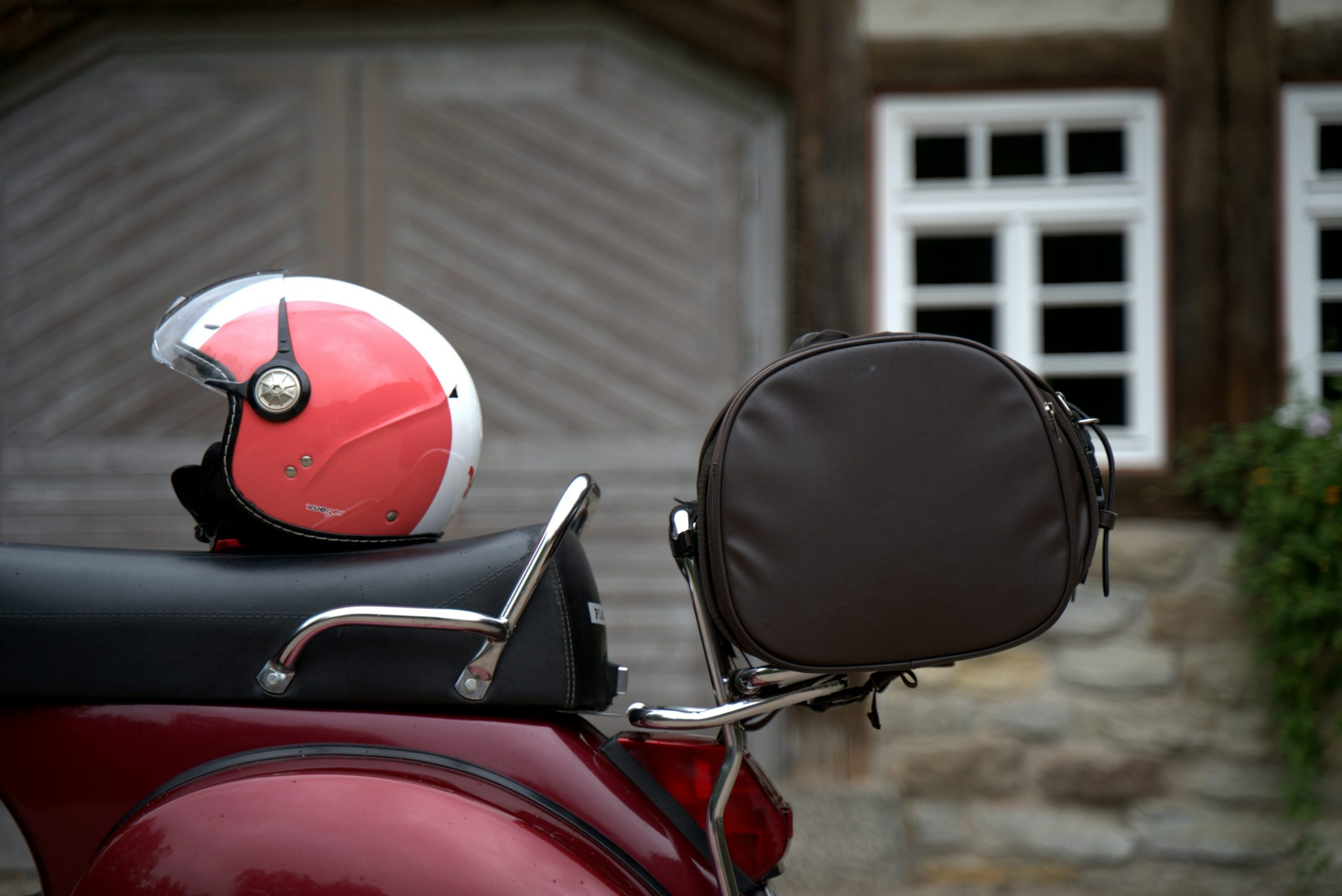
While cars have seat belts and airbags to protect people from various head injuries, two-wheelers don’t usually have much safety equipment.
Therefore, it is important to follow safe riding practices and use the right safety gear, protective equipment, and safety measures to reduce the risk of injuries while riding a two-wheeler.
These items are designed to protect individuals from accidents and potential hazards, providing an extra layer of security. Here are some safety tips to take into consideration:
- Wear a helmet to protect the head from traumatic injuries and head traumas.
- Protective clothing, such as jackets, pants, and gloves, is important in high-risk activities.
- Gear made from abrasion-resistant materials can prevent severe skin injuries during falls for motorcyclists.
- Boots with non-slip soles are preferable for better traction on various surfaces.
- For riders not using full-face helmets, goggles or sunglasses with shatterproof lenses protect the eyes from debris, wind, and insects.
- Have liability insurance to cover the medical bills in case of any accidents, whether due to your or someone else’s negligence.
- Adhere to the state’s traffic laws regarding mopeds and motorcycle riders.
- Make sure to have the necessary skills by getting proper training for moped and motorcycle riding and responsible riding.
Using appropriate safety gear and protective equipment can significantly minimize the risk of injuries, enhance overall scooter safety, and significantly reduce motorcycle or moped accidents. You just have to make sure to choose the right gear for the activity and ensure it fits properly and meets safety standards.
FAQs
Are mopeds safer than motorcycles?
Yes, mopeds are generally considered safer than motorcycles for several reasons. Mopeds typically have lower speeds, making them easier to control and less likely to be involved in high-speed accidents. Additionally, their lighter weight makes them more convenient in traffic.
Can mopeds be used on highways?
In most areas, mopeds are not allowed on highways due to their lower speed capabilities. They are best suited for city streets and suburban areas where traffic speeds are lower.
Do mopeds require the same level of maintenance as motorcycles?
No, mopeds usually require less maintenance than motorcycles. Their simpler engines and lower performance demands mean fewer parts that can wear out or require regular servicing.
Decide Mindfully! Ride Safely!
Mopeds and motorcycles have pretty different safety records and accident rates. Mopeds are smaller than motorcycles and don’t have as much protective gear, so while they might be in fewer accidents, the injuries can be worse. To stay safe, riders should wear proper safety gear, follow traffic rules, and get plenty of road experience. This can help reduce the risk of serious injuries or, worse, accidents.

